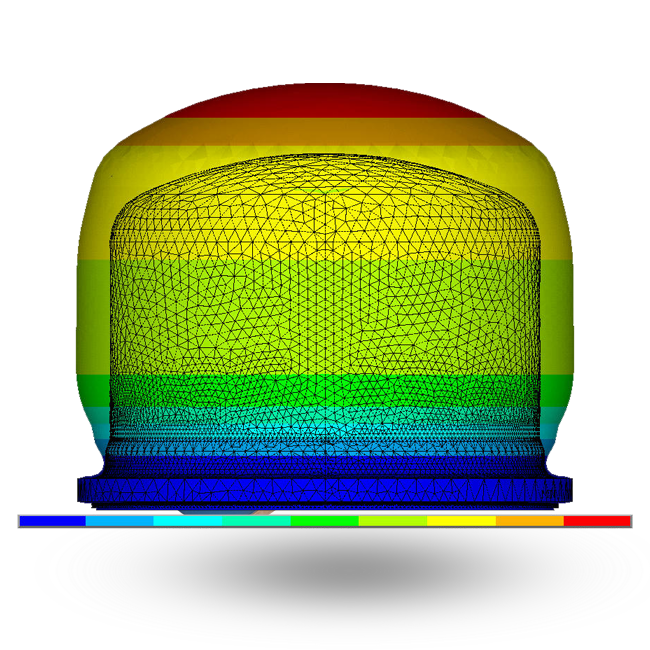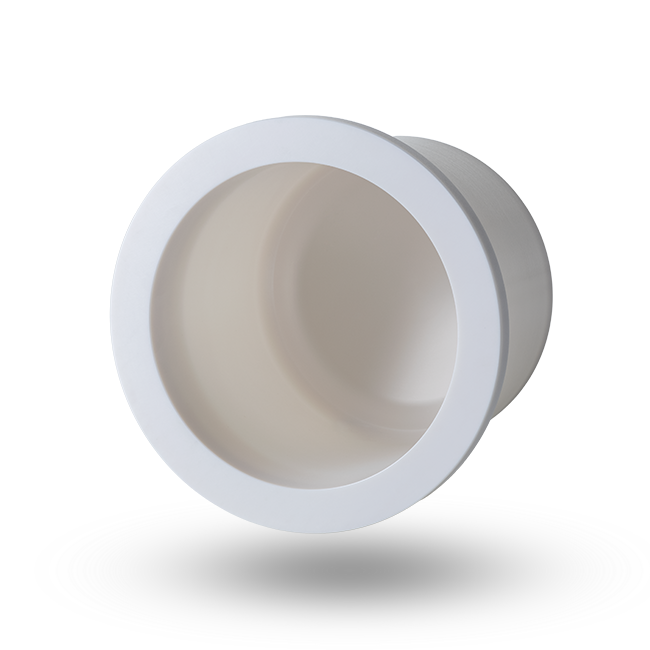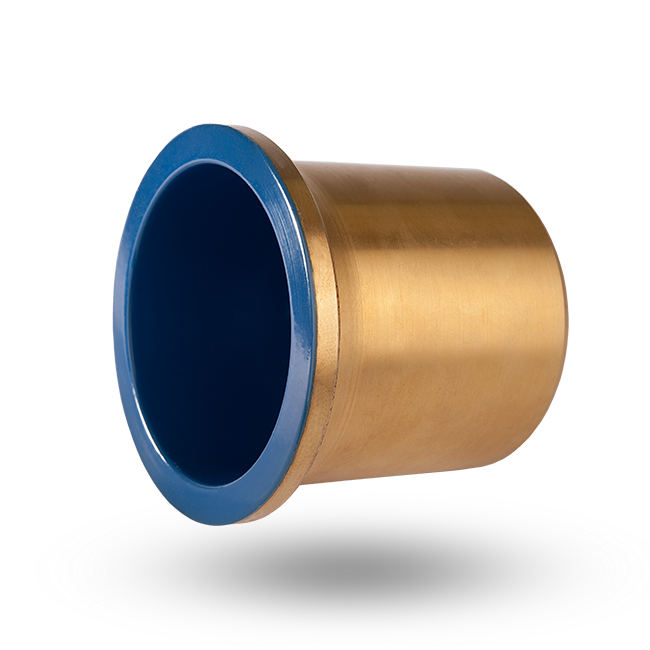Increased energy efficiency for magnetic pumps
Advanced ceramics containment shells by Kyocera
Ceramic containment shells made of FZM and FZM+ ceramics are used in magnetically coupled pumps as sealing element. They have clear benefits compared to other materials: Their use optimises energy efficiency and service life while significantly increasing process safety for people, machines, and the environment.
You are interested in our products or have a specific project enquiry?
Ceramic high-performance material for maximum safety
All processes involving the pumping of toxic, odorous, or other aggressive media require highly specialised process technology to maximise the protection of pumps, employees, and the environment.
Due to its beneficial properties in several relevant areas, advanced ceramics has been established as the most efficient material for containment shells used in magnetic pumps and permanent magnet motors. Over twenty years of experience have culminated in our current FZM and FZM+ ceramic containment shell manufacturing process allowing to achieve minimum wall thicknesses and thus effectively transfer of torque from rotating magnets. The main advantage of ceramic is that it is non-magnetic, so no additional heat is induced in the containment cans and there is no loss of energy in eddy currents. The resulting product is marked by high mechanical strength and flexibility, excellent corrosion resistance against acid and alkali, and low and high-temperature resistance against temperatures of more than 450°C. These properties make our ceramic containment shells wear-free, allowing for maximum product life and maintenance-free operation. Due to its high chemical resistance and significantly longer service life compared to conventional materials, it is particularly suitable for use in corrosive media. When designing ceramic containment shroud, the good mechanical properties of the material, such as high compressive strength and low E-modulus, are complemented by FEM analyses. These enable a design suitable for ceramics so that all stresses can be absorbed even at pressures of up to 95bar (pressure level PN63).

Determining maximum test pressure with a safety factor in relation to working/ nominal pressure using FEM analysis.
100 % of containment shells undergo pressure testing.
Current max. dimensions – flange diameter: up to 400 mm, height: 400 mm
Unlike metallic containment shells, ceramic containment shells are not electroconductive. Eddy currents that reduce performance are prevented, and energy efficiency is significantly improved. Therefore, it is possible to reduce the drive power of a pump up to 15 per cent. In addition, losses due to eddy currents generate by up to 20 kW of heat, which may constitute a safety risk depending on the process and the media conveyed. In the case of substances close to their boiling point or explosive materials, any additional heat input should be minimised.
Optimized energy efficiency thanks to ceramic containment shells
Improving the energy efficiency of pumps and pump systems is of great importance to the overall process. Compared to metal containment shells, ceramic containment shells produce no eddy currents, which results in significant energy savings and contributes to protecting the environment. This way, companies have an efficient way of meeting the requirements of the new European climate law and the carbon pricing stipulated in the national climate protection program for Germany. Model calculations show that the annual savings for a pump range from around 2,600 to around 19,600 euros, depending on the speed and electricity price (assumptions: 8,000 operating hours per year, speed 1,500 or 3,000 rpm, electricity price between 12 and 18 ct/kWh). In this way, the extra cost (or the higher purchase price) of a ceramic containment shell compared with its metal counterpart is usually recouped through the electricity savings alone after just a few months to a maximum of half a year. The CO2 savings per pump, applying the assumptions mentioned, are between 13 and 68 metric tons per year.
Also, the distance between the outer and inner magnets is an essential factor for reliable long-term performance. Our unique grinding technology reduces the wall thickness of ceramic containment shells to only 2–4 mm in the cylindrical section.

Modified material FZM+ opens up new possibilities for increasing requirements
Pump applications demand higher and higher pressures, temperatures, and performance while at the same time increasing pump efficiency. Kyocera has developed a new ceramic material to meet these requirements: the white zirconia FZM+ is characterised by improved flexural strength and high fracture toughness. As a result, test pressures of up to 95 bar (pressure stage PN 63) can be achieved. It is suitable for use in the cryogenic area as well as for external pressure applications with gas as the medium.

Coatings for ceramic containment shells complete the portfolio
Applying a chemical-resistant, pore-free coating to the inside of our ceramic containment shells makes them suitable for pumping highly aggressive acids such as hydrofluoric acid. This leads to much longer service times and an expanded range of applications.
Coating the outside with titanium nitride reduces electrostatic charges and expands potential applications of the isolation shells in Group II explosive atmospheres to Category 2, Zone 1.
![[Translate to English:] [Translate to English:]](/fileadmin/user_upload/produkte/Mannheim/s/containment_shell_1_kyocera.png)